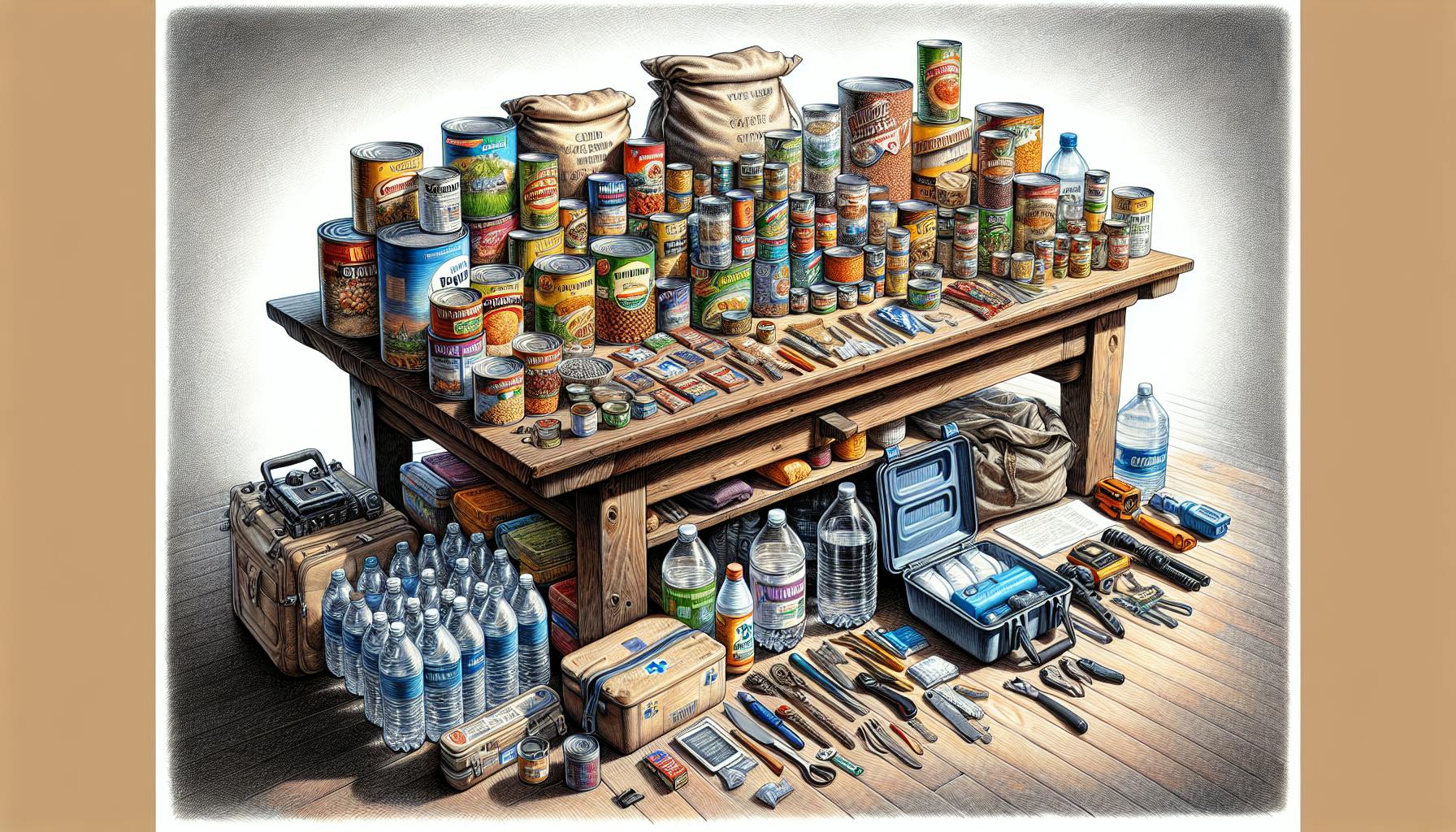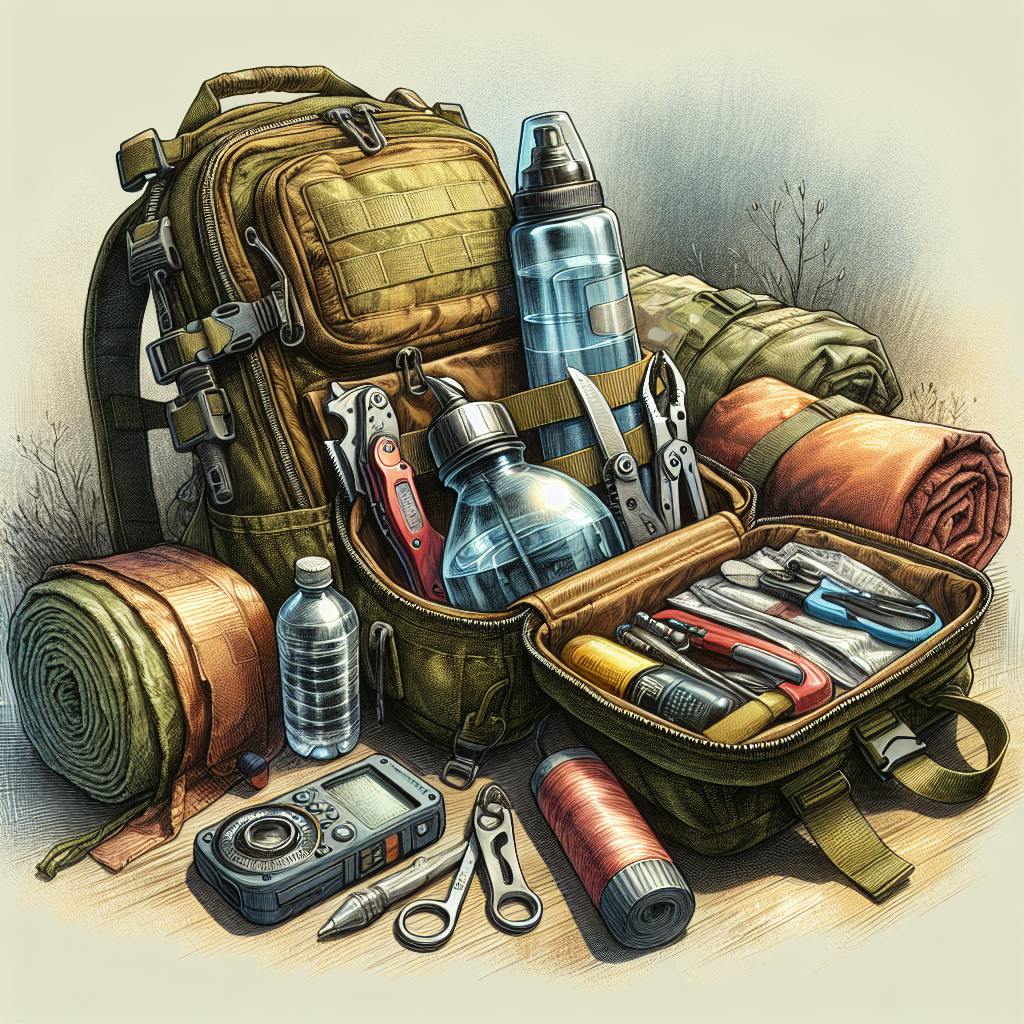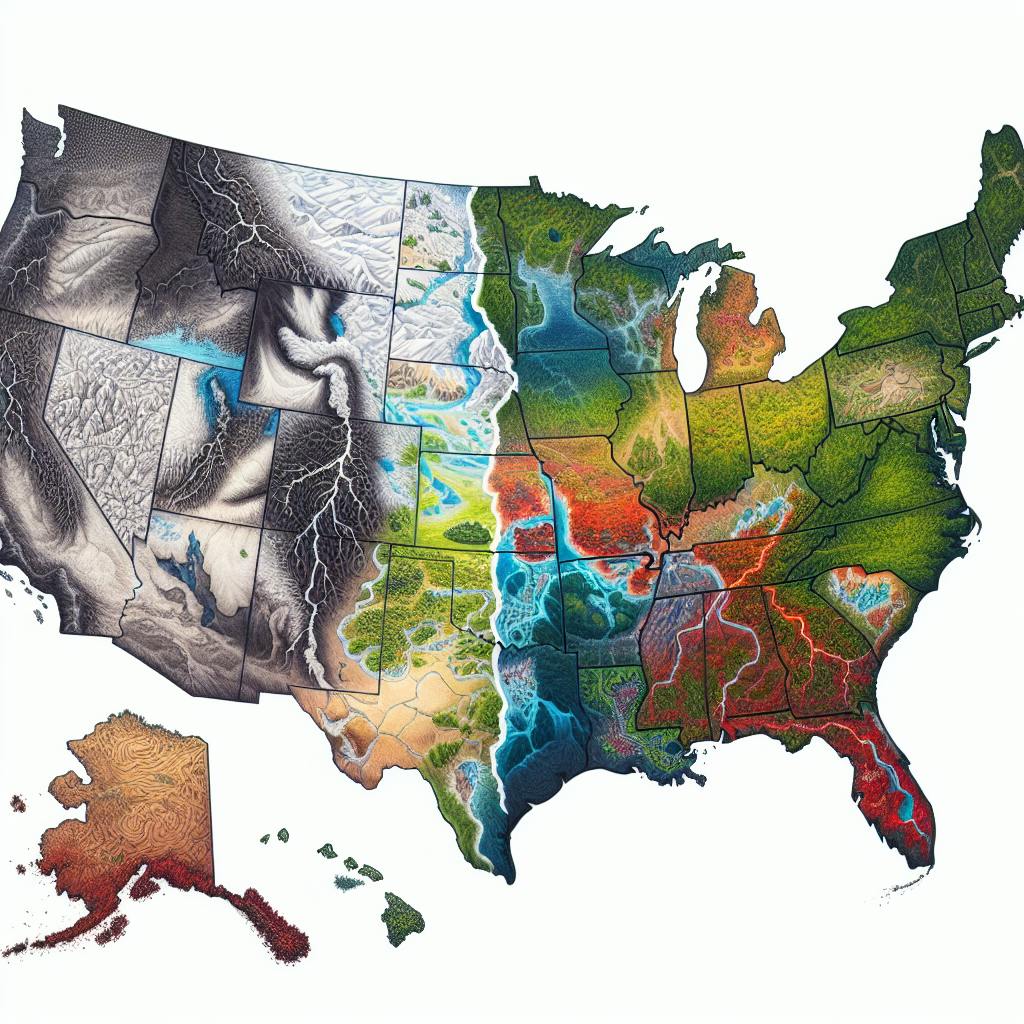Introduction
With global instability on the rise, creating a safe space for emergency shelter has become increasingly prudent. A panic room provides vital peace of mind – a secure, self-contained refuge in times of civil unrest, home invasions, nuclear events, natural disasters, and other emergencies. Properly stocking your panic room is crucial to ensure safety, sustainability, and self-sufficiency when disaster strikes. This comprehensive guide covers essential categories like water, food, medical supplies, power, and sanitation to help you prepare for short and long-term scenarios. Follow these tips to create a fully-equipped safe haven for weathering any emergency situation.
When stocking your panic room, focus first on necessities for basic survival like water, non-perishable food, first aid, lighting and communications. Gradually expand your capabilities for longer-term habitation by adding renewable power sources, food production, fortification, and entertainment. Rotate perishable stock every 6-12 months to avoid wasting expired supplies. With careful preparation, your panic room can provide a reliable sanctuary during civil unrest, natural disasters, or any other threats to personal safety. Read on for extensive details on outfitting your panic room for maximum security and self-reliance.
Short-Term Survival Essentials
The first priority is stocking adequate provisions to safely survive at least 72 hours in lockdown. Core supplies provide basic sustenance and self-sufficiency until the immediate external threats have passed.
Water - The #1 Priority
Water is the most vital resource for survival. Dehydration poses a severe threat, especially in tense situations where panic causes heavy sweating and breathing.
-
Store at least 1 gallon of water per person daily for a minimum 3 day supply. This equals 3 gallons per person for 3 days.
-
Use sealed bottled water and replace stocks every 6 months as containers degrade over time.
-
Have backup water purification methods like filters, iodine tablets, or boiling gear in case supplies run out.
-
Consider large multi-gallon containers or barrels with spigots for convenient access and storage space savings.
-
Keep electrolyte powders on hand to replenish nutrients and prevent medical complications from drinking only pure water.
Long-Lasting, Nutritious Foods
Stockpile foods that provide calories, protein, and nutrients without refrigeration. Prioritize items with long shelf lives packaged to prevent spoilage.
-
Choose canned goods like beans, tuna, salmon, vegetables, fruits and peanut butter which store safely for years.
-
Nuts, protein bars, and peanut butter offer vital protein and calories for survival situations.
-
Dried fruits, cereals, granola bars, and crackers resist spoilage while satisfying cravings for variety.
-
Comfort foods like candy, cookies, and chocolate bars boost morale in high-stress scenarios.
-
Rotate stock every 6-12 months to refresh supplies before expiration dates. FIFO: “First In, First Out”.
First Aid and Medical Supplies
Being prepared to treat injuries without outside medical care is a key advantage of a well-stocked panic room.
-
Stock trauma supplies like bandages, gauze, ointments, tourniquets, scissors, and painkillers.
-
Include any prescription medications needed by occupants to treat existing medical conditions.
-
Have protective gear like masks, gloves, and sanitizing wipes to prevent disease transmission.
-
Keep copies of reference books like first aid manuals in case digital resources are unavailable.
-
Store supplements like vitamins to maintain health and compensate for lack of fresh foods.
-
Keep over-the-counter medications like ibuprofen, antacids and antihistamines for treating minor ailments.
Emergency Light Sources
When the power goes out, light becomes essential for navigation, safety, and peace of mind.
-
Have flashlights, headlamps, and extra batteries so you aren't left in the dark.
-
Glowsticks and chem lights provide reliable secondary light sources.
-
Crank or battery-powered lanterns sustain light for longer durations.
-
Install emergency lighting fixtures with integrated batteries.
-
Solar-powered motion lights around the exterior improve security.
Communications Equipment
Reliable comms allow coordination with others and staying informed about conditions beyond your walls.
-
Keep an emergency radio to receive broadcast updates if cell networks are down.
-
For long-range comms, consider a satellite phone unaffected by failed landlines.
-
Portable WiFi hotspots with cellular data provide internet connectivity.
-
Two-way radios enable short-range communication between locations.
-
Ensure ample spare batteries to keep devices powered up.
Expanding Capabilities for Long-Term Stays
Once short-term survival is secured, expanding your panic room's capabilities enables safely waiting out extended disasters or societal breakdowns.
Food Production and Preservation
Generating your own food provides long-term sustainability and hedges against depleted supplies.
-
Compact hydroponic systems offer renewable vegetables and herbs without soil.
-
Heirloom seeds and basic gardening tools allow growing basic crops.
-
Canning, dehydrating, curing, and fermenting food enables long-term preservation.
-
Fishing gear, snares, and firearms facilitate hunting for meat.
-
Small livestock like rabbits, quail, and chickens can provide a renewable protein source.
Power and Utilities
Maintaining continuous power allows you to keep using essential equipment and technology indefinitely.
-
Store fuel for generators like gasoline, diesel, propane tanks or natural gas hookup.
-
Small solar panel kits recharge devices using renewable energy from the sun.
-
Battery banks safely store solar power for nighttime use.
-
Hand crank chargers and radios provide backup options that don't require fuel.
-
Isolate and protect water and ventilation systems for self-contained operation.
Security and Fortification
If unrest lasts for years, permanent defenses and early warning systems become necessary.
-
Install hidden cameras around the perimeter with feeds to monitor for intruders.
-
Have sandbags, steel doors, bulletproof glass and emergency lockdown protocols for defense.
-
Set up discreet exterior alarms and traps to alert you of perimeter breaches.
-
Take tactical defense courses to hone skills with firearms, surveillance, and situational awareness.
Sanitation and Hygiene
Maintaining cleanliness and health is challenging without consistent utilities access.
-
Stock up on toilet paper, paper towels, sanitizing wipes, feminine products, and soap.
-
Store pool shock, bleach, peroxide, and other disinfectants for cleaning and purifying.
-
Have a camping toilet, waste bags, and digging tools for setting up expedient latrines.
-
Install water filters and large supplies of purification tablets.
-
Learn to make soap from fats and lye for long-term hygiene sustainability.
Morale and Entertainment
Boredom and isolation take a psychological toll over time. Having activities and creative outlets improves mood and mental health.
-
Pack books, games, DVDs, musical instruments, writing supplies, and other amusements.
-
Store sentimental items like photo albums that provide comfort and familiarity.
-
Religious texts provide spiritual support for those with deeply-held beliefs.
-
Make sure to include items both adults and any children will enjoy.
-
Portable DVD players allow video entertainment during extended stays.
Key Takeaways
-
Prioritize short-term survival by stocking water, food, first aid, lighting and comms.
-
Expand capabilities for long-term stays by adding power, production, security, sanitation, and entertainment.
-
Rotate out any perishable supplies before they expire every 6-12 months.
-
Practice with your equipment and train any skills needed for sustainable operation.
-
Stay informed about world events to anticipate potential crises before they occur.
-
A well-equipped panic room brings vital peace of mind and prepares you for any emergency.
By following these comprehensive guidelines, you can outfit your panic room as a self-reliant sanctuary ready for whatever the future may hold. Take the time now to fully prepare with the critical supplies and systems needed to ride out crises in security. Your foresight will provide comfort knowing you and your loved ones have a safe space when disaster strikes. As WeLovePrepping.com discusses, being prepared with a well-stocked panic room supports overall goals of achieving self-reliance and protection during emergencies.


